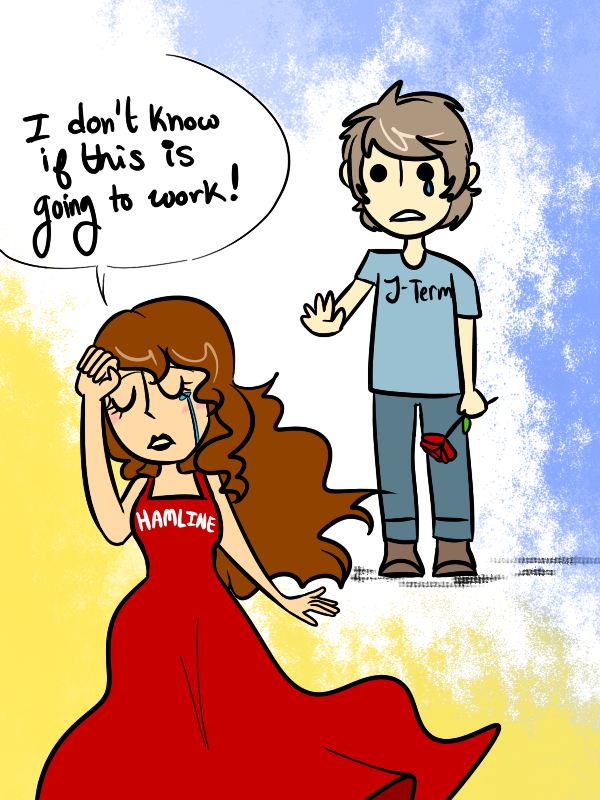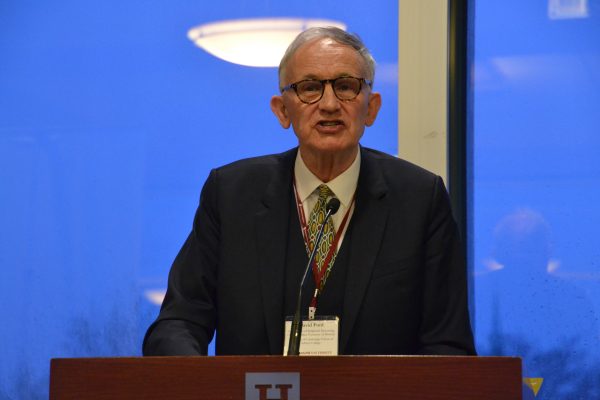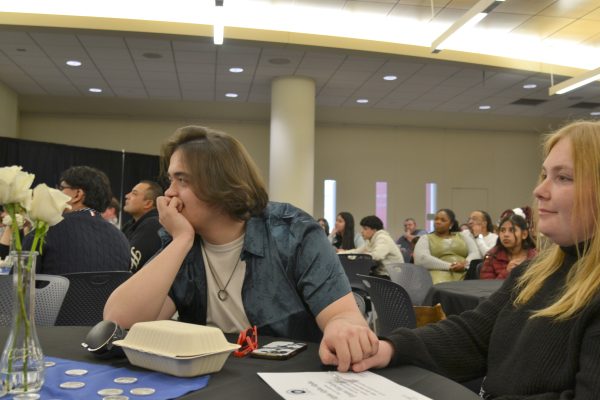Searching for a sustainable J-term
The future of J-term is an uncertain one as conversations continue.
Jterm gets dumped.
May 4, 2016
Discussions surrounding J-term have been taking place between students and administration throughout the year, though no decisions have yet been made. Students and faculty were invited to participate in a discussion with President Miller on Saturday, April 30 at a brunch hosted by Omicron Delta Kappa (ODK) that furthered the conversation regarding J-term.
HUSC President Eric Yeakel said that he reached out to President Miller in fall of this academic year, when the first rumors of changes to J-term surfaced.
“Many students count on J-term,” Yeakel said. “It’s something that makes Hamline unique.”
Yeakel has participated in meetings with administrators about the future of J-term, and indicated that it is one place where Hamline is looking to save money, though complete elimination of J-term is unlikely.
President Miller addressed the subject on April 30 during ODK’s brunch, where faculty and students gathered to discuss the matter.
“The only way we can really figure this out is for all of us to come together,” Miller said. “We need to put everything on the table.”
According to Miller, enrollment in J-term classes in 2016 totaled 1,405 undergraduate students, not counting students taking study abroad courses, doing research, athletic training or completing internships, out of a total undergraduate population of 2,100 students. Eighty-two faculty members taught J-term classes this year, with 74 of them being undergraduate full-time faculty. The cost generated for the credits alone over J-term this year was approximately $6.3 million, which does not include the cost of faculty salary or housing or meals for students, only the cost of the courses offered.
Miller also stated that J-term is not helping students graduate faster or positively influencing Hamline’s four-year graduation rates either, which are currently between 59 and 62%.
“These rates need to be much higher,” Miller said. “If J-term was helping graduation rates, we would be seeing numbers between 80 and 85%.”
Though many students at the event expressed an interest in keeping J-term in its current form in order to fulfill Hamline Plan requirements or get ahead in their majors, Miller would rather see J-term being used for creative or innovative classes that rely on more hands-on or interactive learning methods.
There were mixed views from students about the idea of moving J-term to a more comprehensive May-term as well, and starting the spring semester in January. Some feared they would be “academically checked-out” by May, and it might also interfere with summer jobs, while others thought it would be beneficial and easier to take classes at ACTC schools, most of which do not offer J-term. The only other school in the ACTC which offers J-term is the University of St. Thomas.
Miller also proposed the idea of including the cost of J-term in student tuition, which would add approximately $4,500 to tuition prices. Students in favor of keeping J-term in its current form were not opposed to this cost, as long as financial aid would be available. This would offset the generated cost of credits during J-term, and make it more affordable for the university.
President Miller closed the event by inviting students to look closely at how Hamline’s values are being fulfilled by J-term.
“J-term is its current form is not sustainable,” Miller said. “We need to look closer at the purpose of J-term is it serving its intended purpose?”
Fathima Mohamed, a member of the ODK board and a student who attended the brunch, said she valued the event and learned much more about how J-term operates.
“This truly showed the complexity of the problem,” Mohamed said, “and more knowledge is always beneficial.”
ODK indicated that they will be organizing a follow-up event in order to continue the conversation between students, faculty, and administration about the future of J-term.






